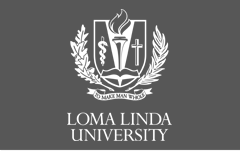Article Title
School
School of Medicine
Abstract
INTRODUCTION AND OBJECTIVES: The LIM homeodomain transcription factor Lmx1b is restricted to the dorsal limb mesenchyme during development and is essential for distal limb dorsalization. In humans, LMX1B mutations cause Nail-Patella Syndrome characterized by nail dysplasia, absent or hypoplastic patellae, and progressive renal disease. In the functional Lmx1b knockout, Lmx1b transcription is reduced 5.7 fold, indicating a role for Lmx1b in its own expression. In this report our goal was to determine whether there are associated enhancers for Lmx1b and whether these play a role in maintaining Lmx1b expression in the limb.
METHODS: We used an Lmx1b-targeted ChIP-seq during mouse limb development (E12.5), to identify potential Lmx1b bound regulatory regions. We isolated the Lmx1b bound regions from genomic DNA using PCR and inserted them into a thymidine kinase (tk) basal promoter linked to a GFP promoter. We electroporated the reporter constructs into presumptive chick wings to determine activity of the potential regulatory regions. The role of Lmx1b in the activity of potential regulatory regions was determined by site directed mutagenesis of the Lmx1b binding sites. We also used Chromatin Configuration Capture (3C) to confirm interaction between the Lmx1b promoter and potential regulatory regions. In addition, we performed a targeted CRISPR-cas excision of the potential Lmx1b-associated regulatory regions and examined the phenotypes of the resulting knockout mice.
RESULTS AND CONCLUSIONS:
We identified two Lmx1b-bound noncoding regions 60 and 66 kbs upstream of the Lmx1b locus that were conserved across divergent vertebrate species and active in the dorsal limb coincident with Lmx1b. The two noncoding regions also overlapped with multiple chromatin regulatory marks (p300, H3K27Acetylation, H2K2methylation2, RNAPol II and Med12) suggesting a role as cis-regulatory modules (CRMs). Site directed mutagenesis of the Lmx1b binding sites within these two Lmx1b-associated CRMs abolished reporter activity within the chick wing bioassay. In addition, Chromatin Configuration Capture (3C) confirmed interaction between the Lmx1b promoter and the most distant CRM. Homozygous CRISPR-cas excision of these to CRMs generated mice with nearly symmetrical ventral-ventral limbs.
Our findings indicate that Lmx1b upregulates its own expression through two upstream CRMs. Our data further implies that a threshold level of Lmx1b expression is required to accomplish normal limb dorsalization.
Recommended Citation
Oberg, Kerby C.
(2019)
"Autoregulation of Lmx1b during Limb Development: A Role in Nail-Patella Syndrome? Enhancer During Limb Development,"
Loma Linda University Student Journal: Vol. 3
:
Iss.
2
, Article 1.
Available at:
https://scholarsrepository.llu.edu/llu-student-journal/vol3/iss2/1

